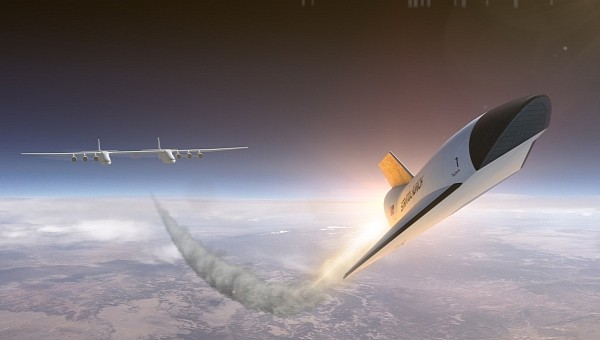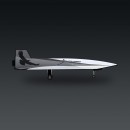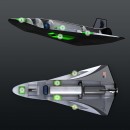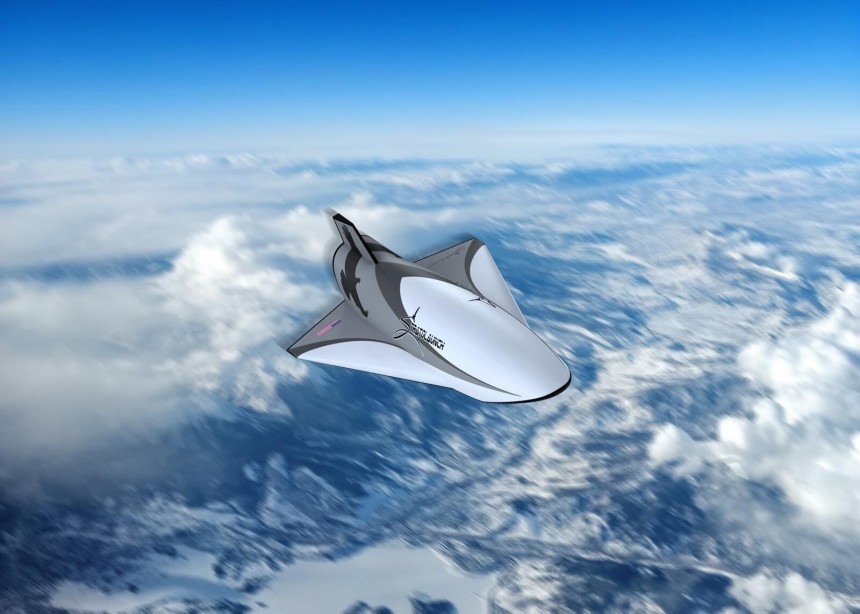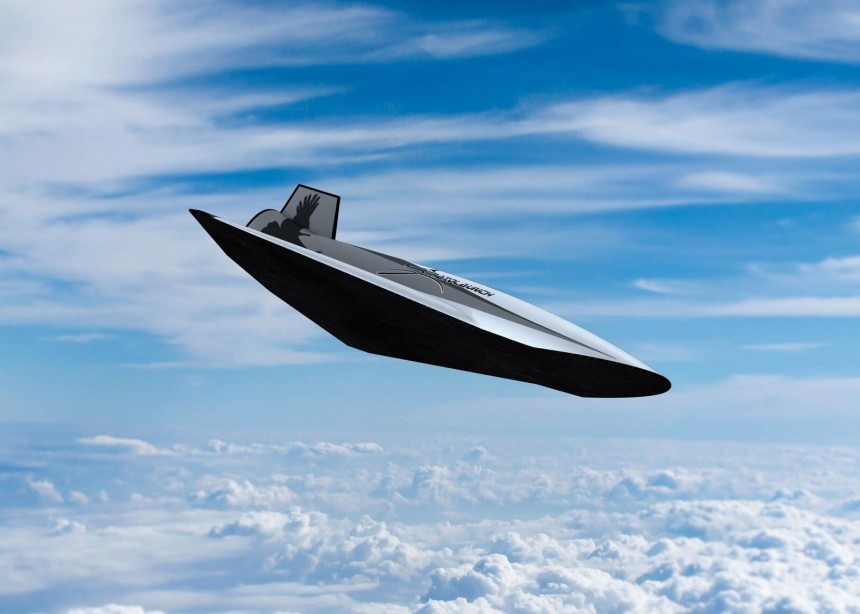Okay, fellas, here's the scoop. The Stratolaunch Talon-A Hypersonic Research Vehicle might be the coolest experimental airplane you've probably never heard of. With promises of all the speed of an X-15 sans pilot, this novel bird boasts affordability that would've made the late 50's US Air Force jealous.
That's all the more poetic because of an announcement on the part of Stratolaunch. In a recent press release, it was announced the US Air Force Research Laboratory had signed a contract to support the operations of the TA-1 program in an official capacity.
Formed in 1997 and based out of Wright Patterson Air Force Base in Dayton, Ohio, the Air Force Research Lab has its roots in research groups dating back to 1945. This lineage begins with the Air Force Cambridge Research Laboratories based at Hanscom Air Force Base in Massachusetts until 2011.
Perhaps their most famous research initiative was Project Space Track. In short, it was a plan to track every single artificial satellite, foreign or domestic, in Low Earth Orbit. Space Track's first target was the Sputnik II mission carrying Laika the dog, the first living being in space. In 2005, Many of the Air Force's special interest research groups were consolidated through the Base Realignment and Closure Commission.
The act transformed what by then was known as the Air Force Cambridge Research Center into the AFRL that signed with Stratolaunch a short time ago. To their credit, the AFRL played an influential role in developing as many as six different X-experimental aircraft. Including the Boeing X-37 Orbital Test Vehicle (OTV) and the Boeing 747-based YAL-1 Airborne Laser testbed.
Safe to say, AFRL is more than qualified for the task at hand. Hypersonic research vehicles are nothing new. The North American X-15 was making test flights as early as the late 1950s and flying at Mach 6 soon after. As of 2022, the fastest jet-propelled vehicle ever recorded, the NASA X-43, could reach speeds of 9.6 times the speed of sound (10,240 km/h, 6,363 mph).
But what makes AFRL's latest venture with the Stratolaunch Talon-A different from past hypersonic planes is planned unparalleled maneuvering prowess. Using rocket engines instead of traditional jets, the Talon-A is lauded as capable of hypersonic flight at a range of different altitudes. Not necessarily just the practically-outer space heights that X-15 flights of old used to fly, but it certainly includes heights that high.
Using the Scaled Composites Stratolaunch air-launch-to-orbit vehicle as a mothership, the Talon-A will drop from underneath the gargantuan twin-fuselage super-heavy lifter's undercarriage. Though it's doubtful the aircraft will push for the title of fastest aircraft in history, there's every reason to suspect it could keep pace with a Boeing X-51 WaveRider's top measured speed of Mach 5.1 (3,900 mph, 6,200 km/h, 3,400 kn).
At least, according to Stratolaunch, the key difference between Talon-A and a traditional X-plane is the cost. According to the plane's official webpage, the prime objective of the Talon-A project is to "Fly often at high Mach speeds across a range of altitudes and flight profiles for reliable access to the real hypersonic environment." It's just the kind of work AFRL is adept at.
"We're pleased that AFRL has chosen to support the flight of our first hypersonic vehicle, and we have enjoyed working with the esteemed team," said Dr. Zachary Krevor, Chief Executive Officer for Stratolaunch. "We look forward to providing flight test services to AFRL and other customers in the near future."
As for Talon-A's first flight, expect it to occur sometime in the first quarter of 2023. If you haven't been paying attention, that date's a heck of a lot closer than it once was.
Formed in 1997 and based out of Wright Patterson Air Force Base in Dayton, Ohio, the Air Force Research Lab has its roots in research groups dating back to 1945. This lineage begins with the Air Force Cambridge Research Laboratories based at Hanscom Air Force Base in Massachusetts until 2011.
Perhaps their most famous research initiative was Project Space Track. In short, it was a plan to track every single artificial satellite, foreign or domestic, in Low Earth Orbit. Space Track's first target was the Sputnik II mission carrying Laika the dog, the first living being in space. In 2005, Many of the Air Force's special interest research groups were consolidated through the Base Realignment and Closure Commission.
The act transformed what by then was known as the Air Force Cambridge Research Center into the AFRL that signed with Stratolaunch a short time ago. To their credit, the AFRL played an influential role in developing as many as six different X-experimental aircraft. Including the Boeing X-37 Orbital Test Vehicle (OTV) and the Boeing 747-based YAL-1 Airborne Laser testbed.
But what makes AFRL's latest venture with the Stratolaunch Talon-A different from past hypersonic planes is planned unparalleled maneuvering prowess. Using rocket engines instead of traditional jets, the Talon-A is lauded as capable of hypersonic flight at a range of different altitudes. Not necessarily just the practically-outer space heights that X-15 flights of old used to fly, but it certainly includes heights that high.
Using the Scaled Composites Stratolaunch air-launch-to-orbit vehicle as a mothership, the Talon-A will drop from underneath the gargantuan twin-fuselage super-heavy lifter's undercarriage. Though it's doubtful the aircraft will push for the title of fastest aircraft in history, there's every reason to suspect it could keep pace with a Boeing X-51 WaveRider's top measured speed of Mach 5.1 (3,900 mph, 6,200 km/h, 3,400 kn).
At least, according to Stratolaunch, the key difference between Talon-A and a traditional X-plane is the cost. According to the plane's official webpage, the prime objective of the Talon-A project is to "Fly often at high Mach speeds across a range of altitudes and flight profiles for reliable access to the real hypersonic environment." It's just the kind of work AFRL is adept at.
As for Talon-A's first flight, expect it to occur sometime in the first quarter of 2023. If you haven't been paying attention, that date's a heck of a lot closer than it once was.
